Frontier Sciences: HIRABAYASHI Shinichiro
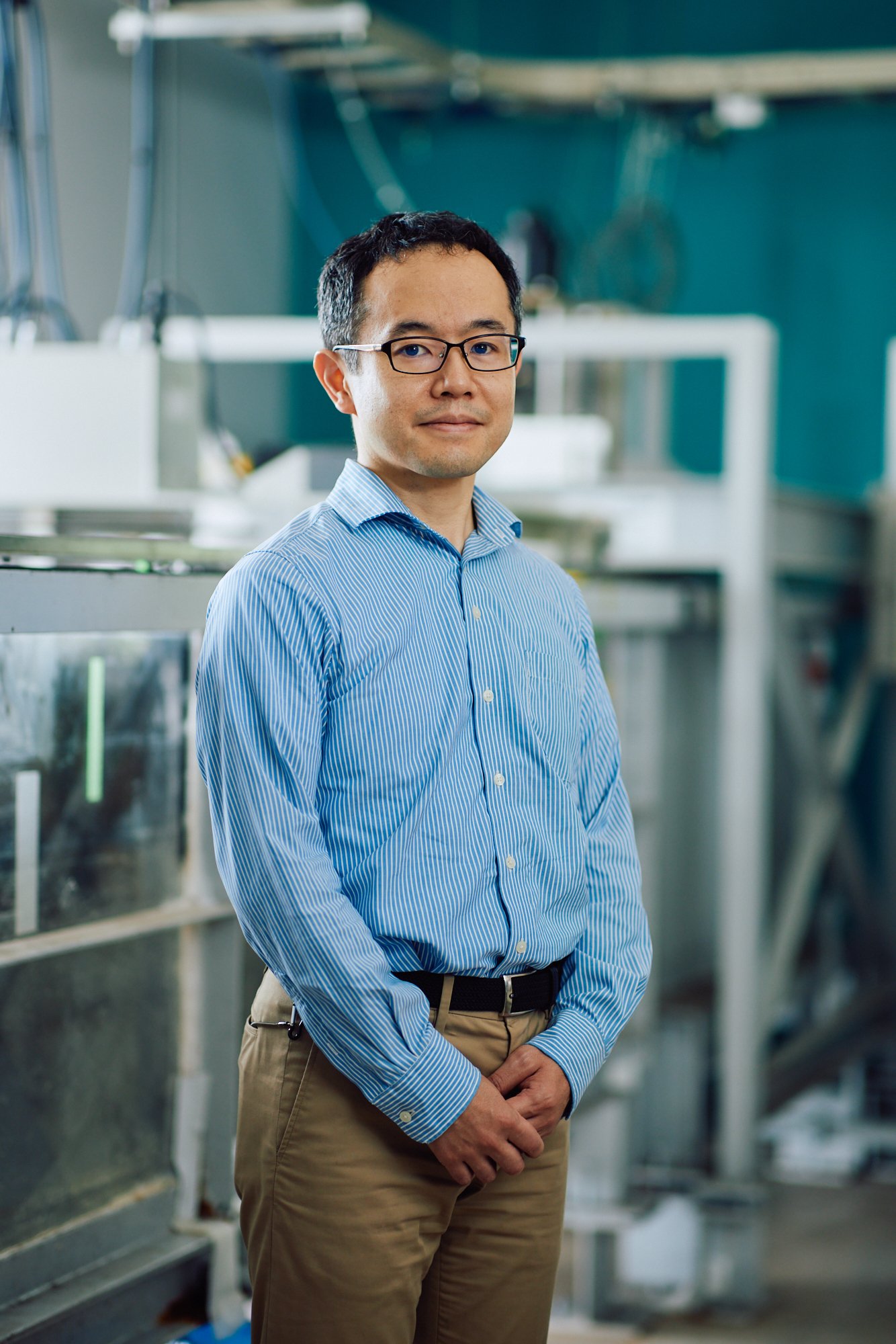
Seventy percent of the earth surface is covered by oceans. Consequently, we live and perform our activities on land, which occupies only 30% of the earth’s surface. Imagine if we can utilize more areas and expand our activities. In my laboratory, we are aiming to create sustainable systems using floating platforms.
Since the Great East Japan Earthquake, renewable energies, such as solar power and wind power, have been emphasized as alternative energies of limited fuel sources. Currently, with the recent trend of decarbonization, there is a surge in demand for offshore wind farms operated by the wind power on the vast oceans. At present, windmills anchored to the seabed in the comparatively shallow coastal zones are the most common form of the offshore wind power system. However, we predict that once farms occupy those areas, constructing farms in the offshore will become necessary.
In the offshore, it is too deep to anchor windmills. Therefore, a “floating platform” with a windmill installed is essential as 80% of the exclusive economic zone surrounding Japan is deeper than 1000m.
A floating body is a buoyant structure that can support people and objects like a raft. Japan has a long history of shipbuilding and those techniques are applied to construct floating bodies. A ship can change its location or direction itself, but a floating body should remain at fixed point in the ocean blowing off waves and currents from all directions. It cannot escape from typhoons but should stay at the designated spot. An unfixed object gets moved by the waves, currents, and wind. Equipment on a floating body, including windmills, is usually weak in movements, and mooring cables also have fatigue risks by movements. To overcome these weak points as much as possible, we must know the characteristics of floating bodies’ oscillations, which are subject to the body design such as the shape and the center of the gravity and develop techniques to reduce them. Movement periods by waves and currents on the ocean vary from a few to some 100 seconds according to the occurrence mechanisms and it is extremely arduous to estimate them precisely.
In my laboratory, we aim to find the relations between forms of floating bodies and their movements. Using floating scale models in various forms, we measure their movements in the waves and currents in the experimental tank and check the invisible flow structures in the water by numerical simulations. By doing so, we identify the typical patterns required to develop models while investigating the mechanisms. When oscillations of floating bodies become possible to be predicted, it will be incredibly useful to design floating bodies.
In addition, a floating body has further uses aside from offshore wind farms. Solar panels can be installed to generate energy on the ocean and plants for producing hydrogen from the seawater by surplus electricity can be built on it. Moreover, it is also technically possible to form a large foundation combining multiple floating bodies and construct houses or structures on it. This is practically considered in countries such as the Netherland which are at risk of land loss as a consequence of sea level rise attributed to climate change.
In Twenty Thousand Leagues Under the Seas written by Jules Verne in 1870, Submarine Nautilus is operated by electric energy generated from the seawater. In the story, Captain Nemo says that the ocean provides food, energy, and everything humans need. Now, about 150 years since Verne wrote this story, obtaining energy from the ocean is almost a reality. A sustainable society where we utilize and live on the ocean may be realized in the imminent future.
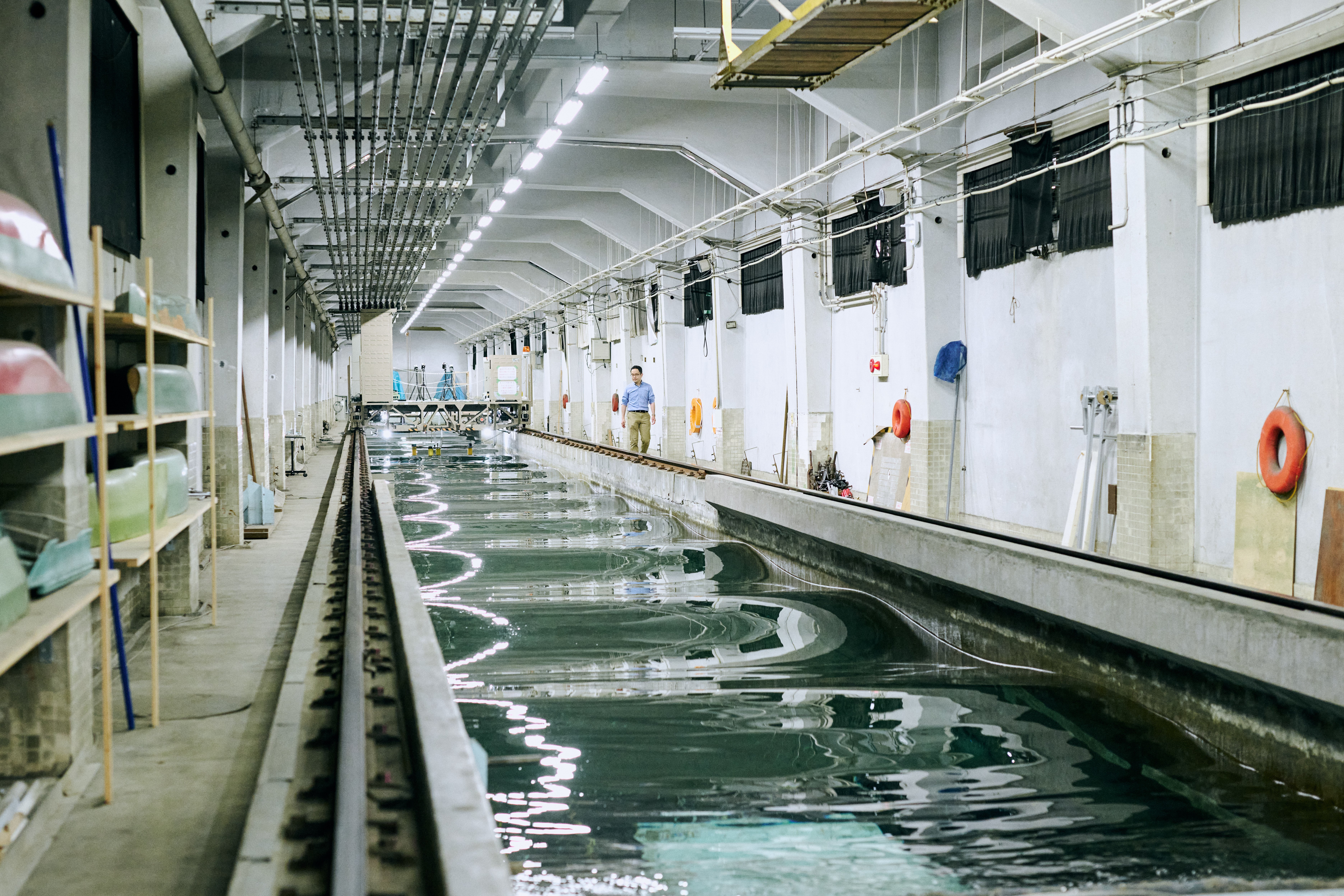
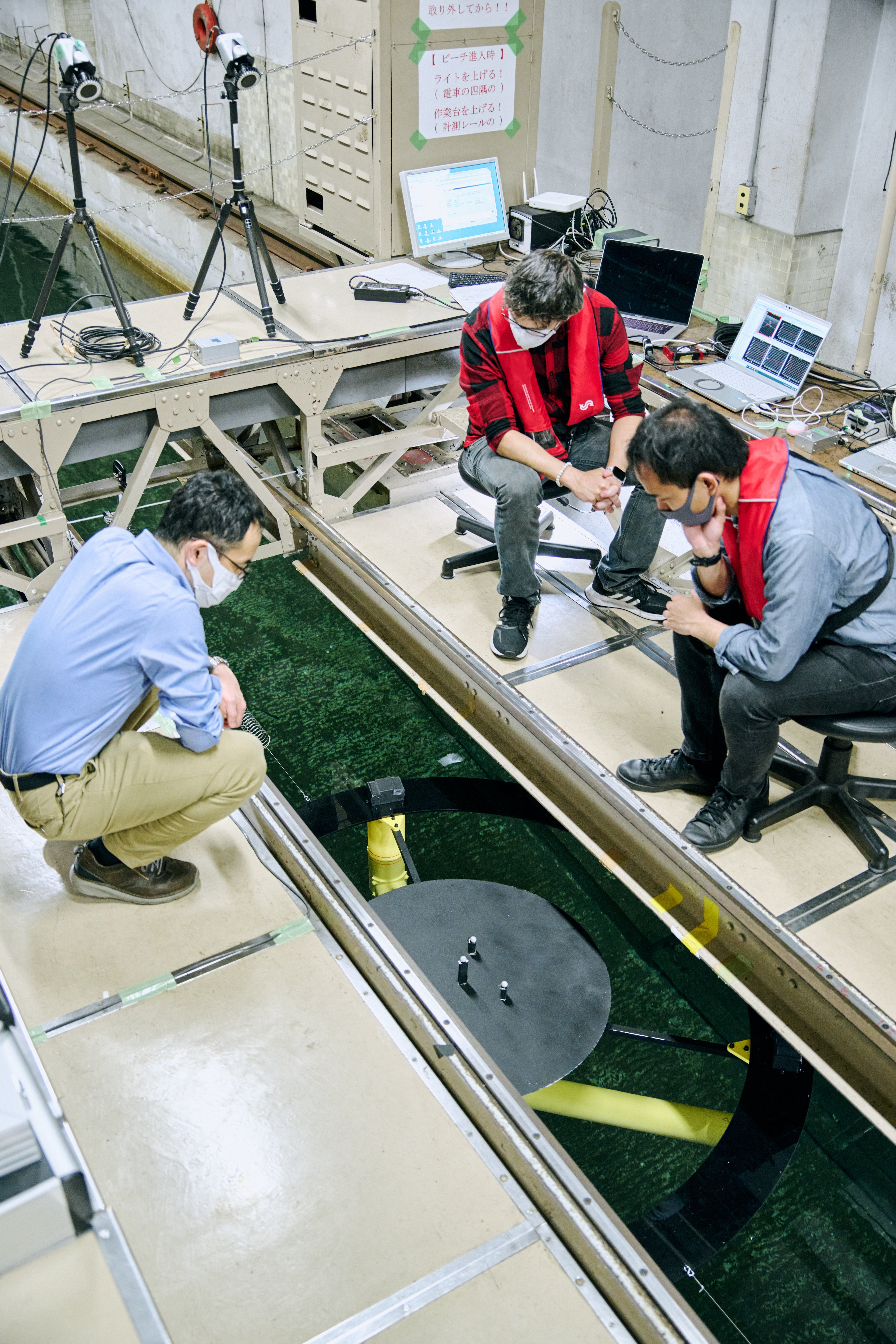
Left; In the towing basin (length = 80m; width = 3.5m; depth = 2.4m), the model’s resistance and movements in a uniform flow can be measured, and regular and irregular waves can be generated.
Right; The floating body’s 6DOF* is being measured by optical measurements highly accurately.
Note: 6DOF = Six Degree of Freedom, the movements of six patterns on the ship; sway, yaw, pitch, roll, heave and surge.
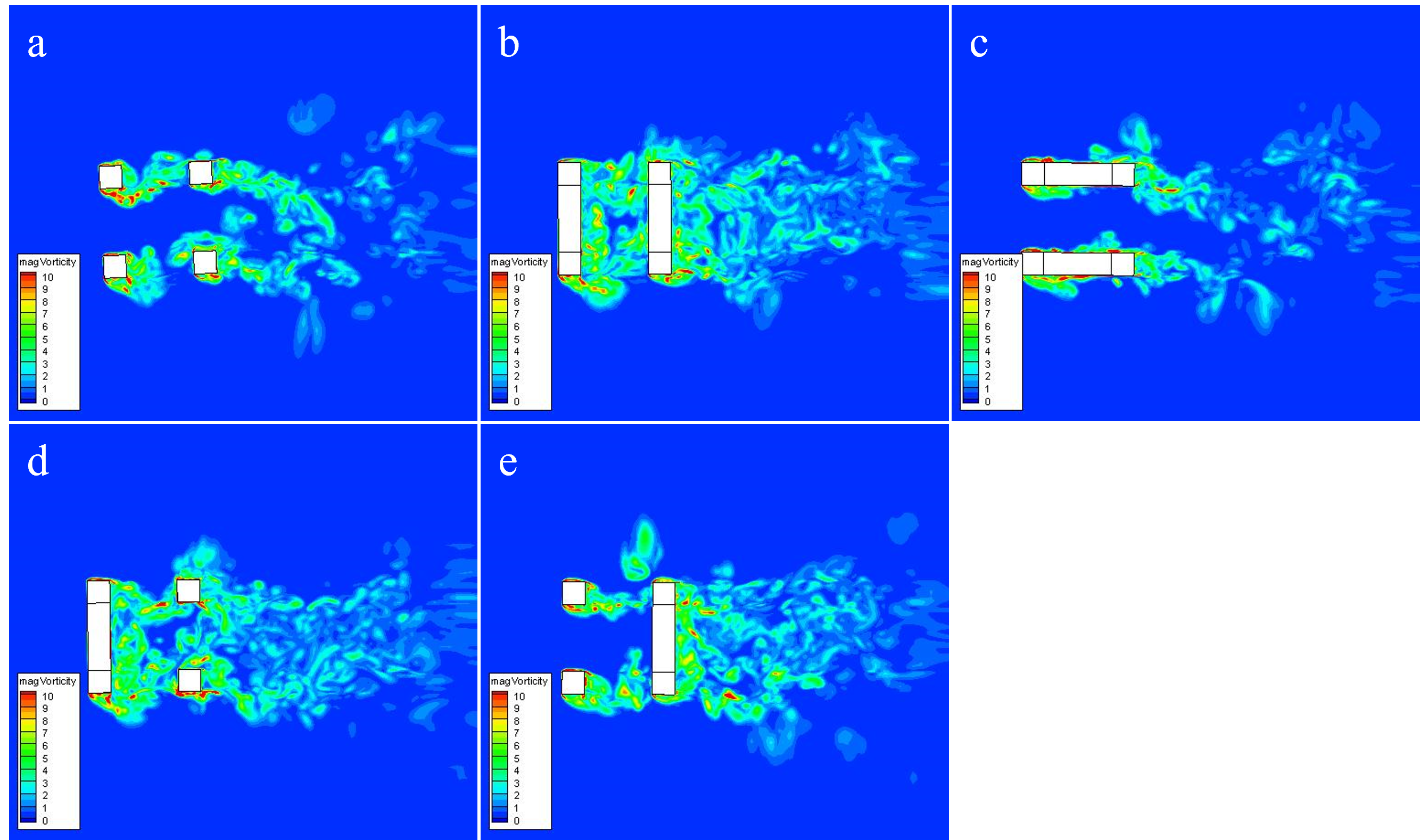
Distribution of eddies around a floating body’s legs in the current reproduced by numerical simulation.
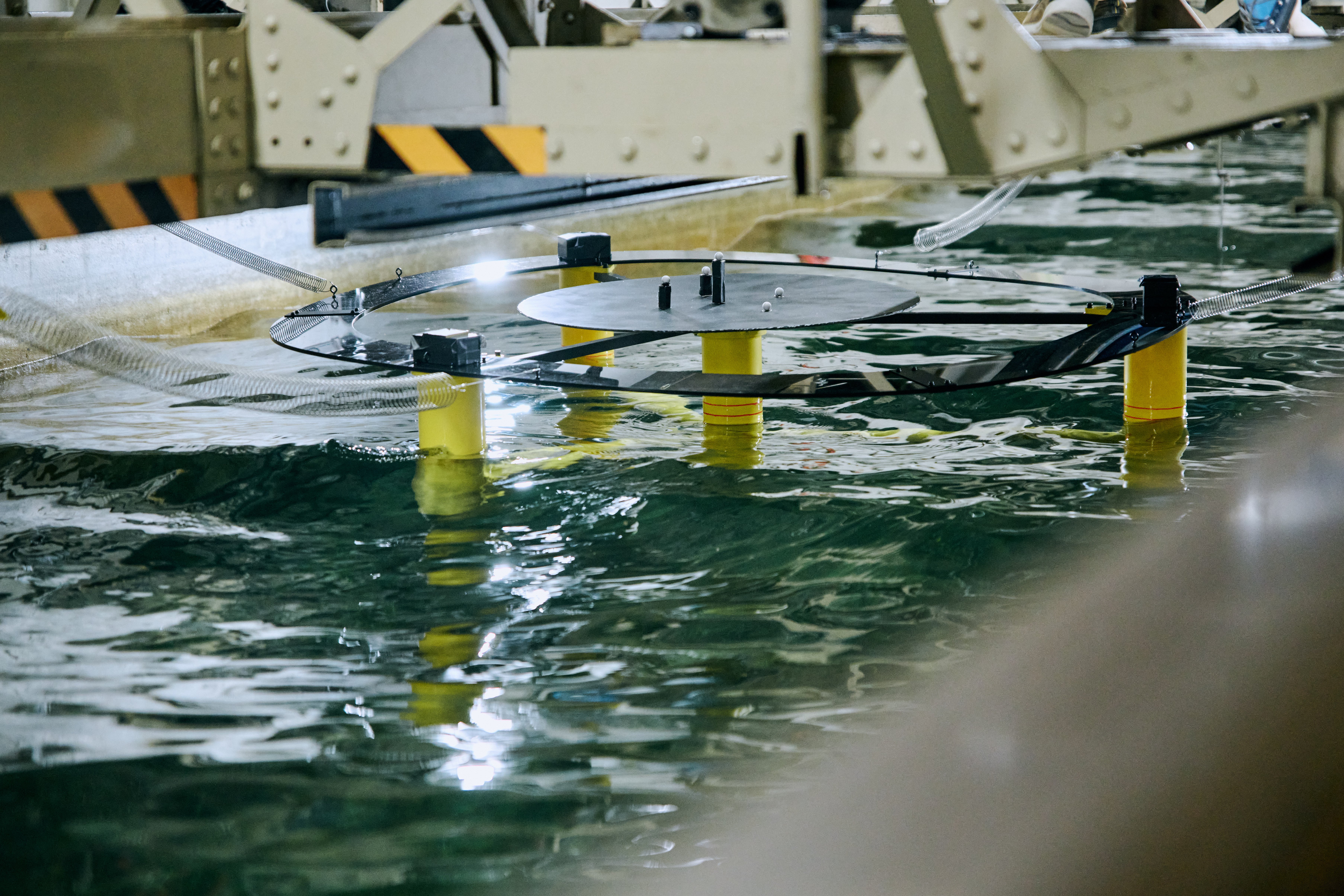
The floating body is shaken by the waves. The body is designed to imitate the sea movements.
HIRABAYASHI Shinichiro Division of Environmental Studies
Associate Professor
Ocean Resource and Energy Group, Department of Ocean Technology, Policy, and Environment
vol.40
- Cover
- Feature Article: The Forefront of VR - POSSIBILITY OF HAPTICS
- Material Science: The Driver of Electron Device Evolution
- Floating Platform for Sustainable System
- GSFS FRONTRUNNERS
- Voices from International Students
- ON CAMPUS x OFF CAMPUS
- EVENT & TOPICS
- Awards
- INFORMATION
- Relay Essay: School in Switzerland
